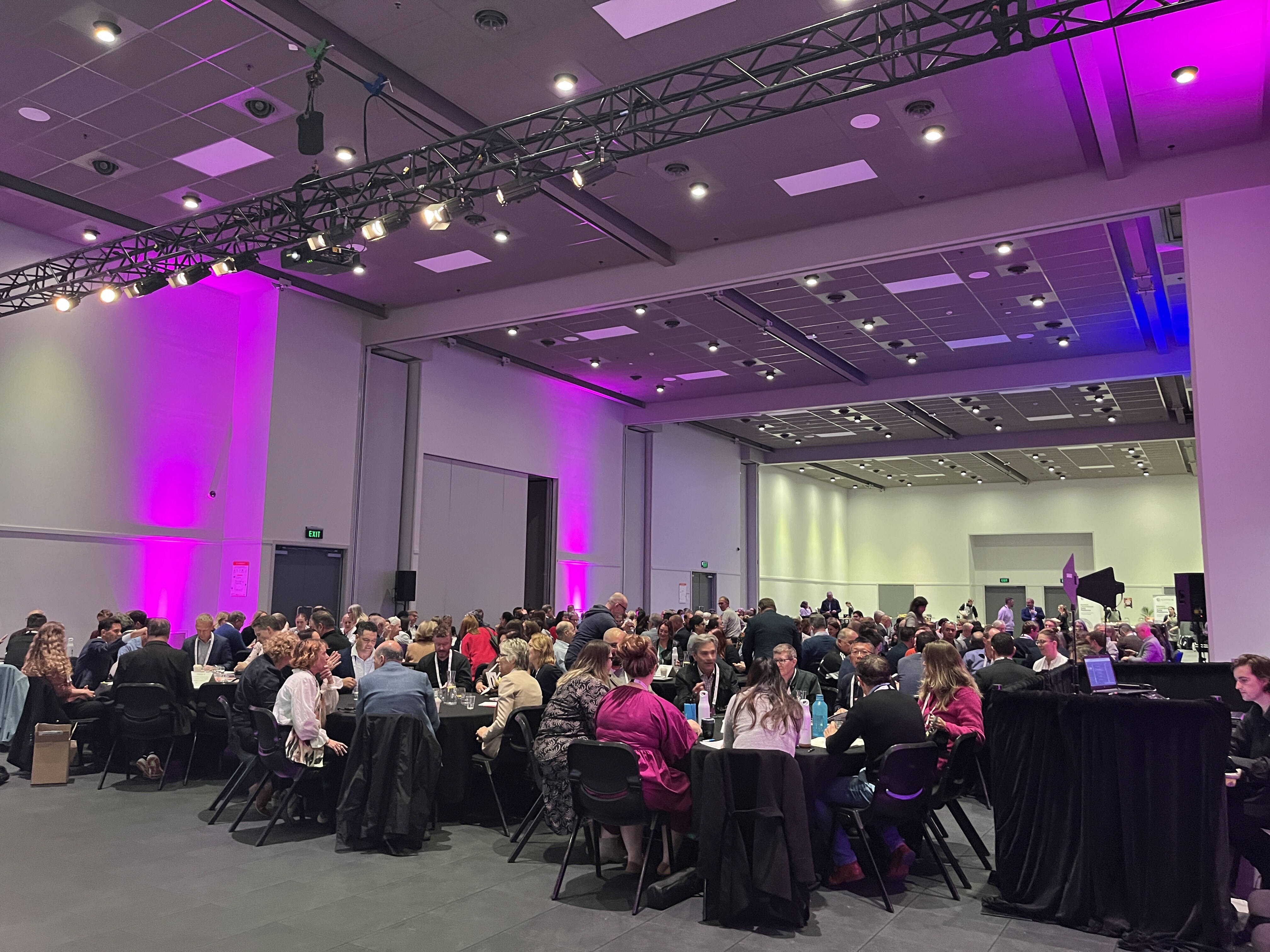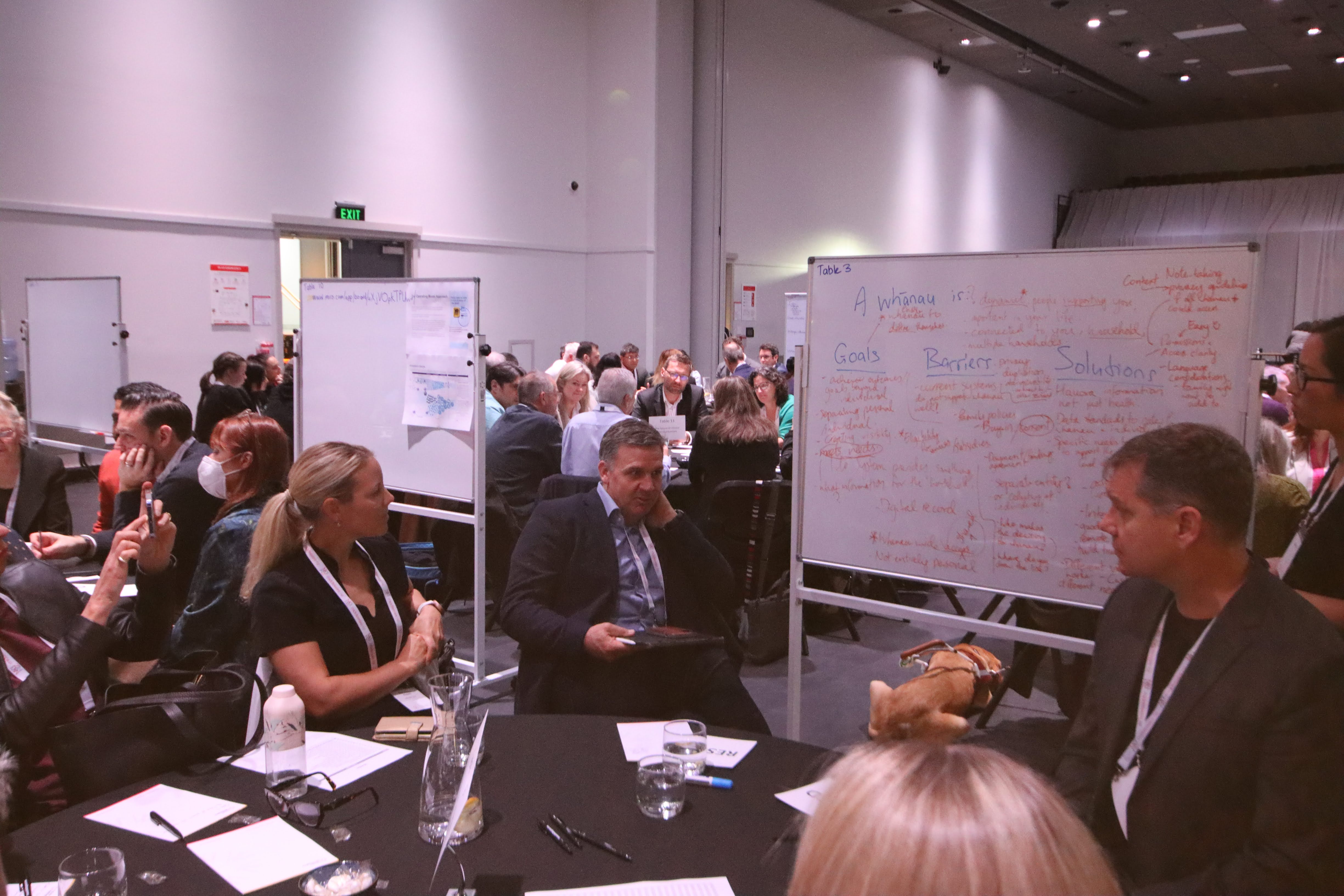Introduction
The topic of our table was ‘Leading change in: Understanding wellbeing impact’. Our goal was to hear participants’ thoughts on what wellbeing means to them, if capturing wellbeing impact is valuable, and how the capture and analysis of wellbeing impact could be practically implemented. On the second day we took the opportunity to hear the feedback of participants on work that Noted has undertaken in this area.
To help structure the discussion we initially divided the session into three main sections:
-
- What is wellbeing?
- How can wellbeing impact be measured?
- How could capturing wellbeing be implemented in practice?
After reviewing our notes from the discussions it was decided to add two further sections to this review:
-
- What is the point of capturing wellbeing impact?
- Noted’s work in capturing wellbeing impact
Executive summary
While there was pretty common agreement on what wellbeing is, and common themes emerged on other topics, we found the table discussions surprisingly diverse and highly valuable.
To summarise the definition of ‘wellbeing’, it was seen as more holistic than ‘health’, or to put it another way ‘the absence of disease’. It was discussed that wellbeing covers all aspects of a person, whānau, or community, including (but not limited to) relationships, education, employment, housing, physical and mental health, and spirituality.
While it was generally agreed that measuring wellbeing is useful, the idea was most certainly challenged. To generalise, it is felt that there was an issue of scope. If a service is focussed on a healthcare speciality, how can it impact a person’s housing situation, and what value is there in asking about it? Responses to this question included, shifting the emphasis to ‘putting the ambulance at the top of the cliff’, knowing if ‘we are any better off’, and directing funding to get the best value.
Most participants referred to some type of agreed measure as a means of measuring wellbeing. These ranged from extremely high level scores, such as asking a person to measure their wellbeing on a single 1-10 scale, to utilising models such as Te Whare Tapa Whā. As a starting point, most participants approached the idea of wellbeing as being measured from the perspective of the person, but after discussion, it was generally accepted that some aspects of wellbeing could also be measured objectively, by another. The idea of measuring wellbeing aspects, whereby a person’s wellbeing could be broken down into many facets was also discussed.
The question of how to measure wellbeing in practice was a challenging one, as participants were very aware of the workload of frontline staff and there was a strong feeling that any additional information capture would be unwelcome and difficult to implement. Other issues raised were the lack of agreed measures, lack of appropriate systems, and the lack of shared data across sectors and government agencies.
On the second day, we sought feedback on the solutions Noted has developed in regard to measuring wellbeing impact, including standardised wellbeing aspects that can be transparently captured by frontline staff without adding additional work, and data discovery tools that enable synthesis and analysis of wellbeing impact. The response from participants was overwhelmingly positive.

What is wellbeing?
There were three main themes that came out of the question, ‘What is wellbeing?:
-
- Wellbeing is a holistic view
- Wellbeing means different things to different people
- Wellbeing is distinct from quality of life
Wellbeing is a holistic view
It seems safe to say that it was universally accepted that wellbeing relates to the state of being of people in their entirety, extending beyond their state of health. Example phrases included:
-
- 'Wellbeing in about balance'
- 'Not just the absence or presence of disease'
- 'Holistic'
Wellbeing means different things to different people
It also came through very clearly that the definition of wellbeing can be expected to change according to the person asked and the context of the question. It came up regularly that wellbeing is not limited to individuals and that wellbeing can also apply to whānau, workforces, communities and entire populations. It was also discussed that the requirements for positive wellbeing may vary according to culture, stage of life, and other factors. Examples from the discussions included:
-
- 'Means different things to different people'
- 'Cultural - Different emphasis for different cultural groups'
- 'Different contexts:
- Personal
- Whānau
- Work
- Community
- Country'
- 'Depends on life stage'
- 'A clinician might have a different view to a person [in their care]'
Wellbeing is distinct from quality of life
An important recurring theme was that ‘wellbeing’ is not the same as ‘quality of life’, and that the social determinants of health nonetheless impact wellbeing. Wellbeing was seen as a person’s or people’s perception about their life, not just external factors, such as employment, that are presumed to influence it. Key phrases included:
-
- 'Ability to have quality of life'
- 'Living your best life'
- 'Related to quality of life but not the same thing'
What is the point of capturing wellbeing impact?
Participants in many of the discussion groups challenged the value of measuring wellbeing, which led to some animated conversations. To summarise, the feeling seemed to be that staff in the health system are not in a position to impact a person’s wider circumstances, e.g. housing, and therefore information capture outside of their work is seen as out of scope. At least part of this sentiment would appear to have been driven by a fear of unnecessarily increasing the workload of frontline staff for no obvious gain. Comments included:
-
- 'Why do we want to measure wellbeing?'
- 'What's the benefit tied it for the person in this case?'
- 'What are we trying to achieve with these metrics?'
- 'No time for meaningful engagement [beyond the immediate scope of interaction with person]’
Proposed answers were varied. A common idea was that focussing on wellbeing at a high level could support people to stay well and out of secondary care, and measuring wellbeing offers an opportunity to know the impact of services provided and resources invested. Some statements included:
-
- ‘We have to change the model of healthcare that’s disease based. If we want to change the model, we have to change the metrics of what we do and why.’
- ‘Ministers are dishing out money but are we any better off? Did we get the outcomes? No one knows because we aren’t measuring the right things.’
- ‘Being the ambulance at the top of the cliff.’
- ‘Influence policy.’
- ‘It’s important to know how people feel about their wellbeing. That’s an important part of whether we are doing a good job for people.’
How can wellbeing be measured?
There were two main themes that came out of the question, ‘How can wellbeing be measured?':
-
- Measurement approaches
- Challenges to measuring wellbeing
Measurement approaches
As wellbeing has a personal dimension, there was a fair bit of debate on whether anyone, other than the individual, can have an opinion on their own wellbeing. Another area of debate was whether wellbeing is effectively a single score, or whether it can be broken down into many facets.
On discussion, the wider consensus was that wellbeing is multifactorial and can be a composite of views and observations from both an individual and workers they interact with. In multiple instances, participants shared that the most valuable information about a person’s wellbeing are captured in the narrative part of their case notes. It was also said that wellbeing needs to be tracked over time to be useful. Some key examples included:
-
- 'Likert scale? But this only gives the state, not the why.'
- ‘Variables come through in kōrero and through manaaki.’
- ‘Kaimahi are already assessing aspects of wellbeing in their narrative notes as part of their current work.’
- ‘Wellbeing has to be broken down into sub-categories as it’s multifactorial.’
- ‘Triangulate view of person, whānau and practitioner.’
- ‘Data is telling the story in the end.’
- ‘Tracking over time is where the value comes in.’
- ‘Focus on the lego pieces from the frontline perspective, and then we can use the lego pieces (data points) to build the picture.'
Challenges to measuring wellbeing impact
There were more challenges listed for measuring well being than in any other category! The main themes were concerns about adding to the workload of frontline staff, how to measure something that is subjective and prone to change, and a lack of systems that allow staff to capture and aggregate the required information. Examples included:
-
- ‘Practitioners don’t have the time.’
- ‘How can we incorporate all these different sources of truth without creating more load to the frontline?’
- ‘There are objective aspects but it’s also how you subjectively feel as an individual.’
- ‘How do we measure indirect impact as well?’
- ‘They [people] can’t articulate how they feel.’
- ‘Determinants can change over time.’
- ‘There are so many aspects to wellbeing so how do you have a list that you can go through with someone to assess their wellbeing?’
- ‘A lot of services are still writing on paper.’
- ‘Silos between primary and secondary care.’
- ‘[It would require] connected services across sectors.’
- ‘The issue is the funding system. The pervading mindset around what success looks like affects how we report our wellbeing impact which is different from understanding well-being.’
How could capturing wellbeing impact be implemented in practice?
The question of how wellbeing impact capture could be implemented can be split into two main areas of focus:
-
- Requirements to enable the capture of wellbeing impact
- Methods of implementation
Requirements to enable the capture of wellbeing impact
In summary, the requirements of an eventual solution were that it needed to be simple to use and not impose an additional burden on staff, it would need to be cross-sector, capture a variety of voices, and have a standardised data set. Comments from participants included:
-
- ‘Needs to be simple and effective’
- ‘Agreement across the broad measures so that the data is comparable.’
- ‘It needs to be cross sector, looking at the same thing but from different perspectives [Te Ao Māori, medical, cultural, whānau, etc]’
- ‘Consumer and cultural and clinical lens.’
- ‘How we choose our metric is the key.’
- 'Less about what the metric is and more around the system that implements and manages it.'
- 'Higher trust environment is needed.'
- 'Having wellbeing goals that are transferable through platforms to other services, e.g. ED.'
Methods of implementation
Ideas for implementation included adding relevant questions to the census, analysing keywords from case notes, re-looking at how services are funded, and providing appropriate systems to providers so that it is possible to capture the required data. Examples of what was said include:
-
- Part of census'
- ‘Keyword [collection] with thematic analysis.’
- ‘Break it down into aspects to then analyse it.’
- ‘Ask people about their experience through surveys, interviews, [and capture] customer voice.’
- ‘Can measure things that can impact someone’s wellbeing. Can ask people about their wellbeing. Kaimahi can layer an assessment of wellbeing considering the person’s perspective but also more objective measures.’
- ‘What if a contract came with access to a certified system (or a few options) that can be used with the contract at no extra cost?’
Noted's work in capturing wellbeing impact
Working with complex community-based health and social providers, Noted has developed a range of solutions to enable many, diverse teams to work from a unified system with end-to-end data capture and analytics, out of the box. This work has included developing a taxonomy of data domains, including wellbeing aspects.
The solution enables workers to easily take comprehensive case notes that transparently capture required standardised data, so there is no additional load placed on frontline staff.
The data domains enable Noted to provide standardised data discovery tools to customers as well as making it possible to aggregate data from multiple sources to enable commissioning agencies to obtain a population view of information relevant to them.






